 |
Department of Earth Sciences Indian Institute of Technology Kanpur |
Phd. Students >> Imran Khan
 |
Imran Khan Room: A-217, Hall-4 |
| Thesis Title: | High Resolution Paleoclimate Reconstruction and Sediment Sourcing of buried Channels in Satlej-Yamuna Plains using Multi-Proxy Approach. |
|
Abstract:
|
Climatic changes and active neotectonic movements in Late Quaternary time in the north-western plains of India have led to the migration and abandonment of drainage systems to form a large number of palaeochannels. Till date, no conclusive evidence has been provided as to when and why the Saraswati river ceased flowing. The prevailing opinion is that Saraswati river was originally fed by the Yamuna and Sutlej Rivers and that it dried due to a combination of tectonic activity and river capture (e.g., Valdiya, 2002; Sinha et al., 2009). Sinha et al. (2009) postulated that >120 Ka ago, Yamuna was flowing along the present-day dry palaeochannels of Ghaggar/Hakra riverbed, and Late in the Quaternary the Yamuna may have relocated to its current position. This hypothesis can be tested by comparing detailed stratigraphy and sediment chemistry between the sediment cores from the paleoghaggar channel and Yamuna alluvium. Present study aims at to establish sub-surface existence of buried channels of paleo-Yamuna as possible source of the paleo-Ghaggar river. This will be addressed by developing alluvial stratigraphy (with OSL age constraints) in valley fills using available and new drill cores from the Sutlej-Yamuna plains in Haryana and Punjab. To establish the provenance of paleochannel sediments using geochemical fingerprinting (Sr-Nd isotope composition of silicate fractions of core sediments). To reconstruct paleoclimate (temperature and precipitation variations) and paleovegetation patterns in Late Quaternary in the study area using oxygen and carbon stable isotope ratios and major element composition in carbonate paleosols. |